My bestie, Godefroy de Lyon, and I were approached by their royal majesties to help create a memorable Coronation outfit in the late gothic style of 14th and 15th centuries. Genevieve made her own linen chemise, kirtle, veil, and St Bridget's cap. Han's under cotte is Sartor silk, made by his mother, as are his hose.
Because of Covid and post office snafus, this project had less time than we had hoped, and both Godefroy and I only had about a week to sew each of our parts. We both arrived in Sioux Falls the afternoon before the event to hand finish it together before handoff.
Myself doing the garments, adjusting paper patterns into the right period style, machine sewing the garments and hand finished hems and buttons. Godefroy then doing the fur trimming- cutting from plates, adjusting for the curves by cutting darts and adding in fur gores, and adding in the black ermine tails before basting onto the finished garments.
The furs chosen- A dark minivair for Hans and a snow white ermine for Genevieve. Provided By Lyon Fur
The gold shank buttons were chosen for their size, bling, non obtrusive pattern, and quick shipping, thanks Amazon. The compass rose buttons, by Avalon Naturals on Etsy, were used by her Majesty on her cotte sleeves.
Photo from Charles de Bourbon
Han's fashion cotte is inspired by a previous garment made by Charles de Bourbon.
It is a transitional style of the late fourteenth century, patterned as a long tunic, but with gores to give it the volume of a Houppelande that was becoming popular. Dame Helene has an example of this kind of patterning in one of the extant Greenland finds on her website. I find using a pattern of gores that pairs a bias cut edge with a straight edge is what gives the garment a natural pleating effect. The hanging tube slit sleeves and fur trim placement is something we start to see in artwork around 1410 and becomes very fashionable as the century progressed.
Geoffrey, holding forth to his daughters. Châteauroux, Bibliothèque Municipale, Ms 004, fol. 1. 1410-1430?
The cotte is 2 different coat weight felted wools, a common and appropriate fabric, in a parti colored style that was commonly found in much of the 14th century French fashion, and continues occasionally into the early 15th century.
Sacrament of Philip V le Long. XIV century, Bibliothèque de Toulouse
Because of the time and blind patterning it did need some adjustments. The shoulder seam placements were later adjusted and the buttons are decorative, but the front of the garment is set up so that if someone is ambitious they can be made functional. The fabrics were also slightly different weights and so stretched a bit differently as it was being made, had there been time to hang it before hemming and trim that would have been solved.
Godefroy sewed the fur to the hem and then made adjustments to the fur trim to match the curve of the hem. To help maintain the visual pattern of the minivair, Godefroy carefully removed only small slivers, no larger then 3/8 of an inch from each of the white bellies and then had sewn it back together. By making the top of the trim smaller than the bottom Godefroy was able to match the shape of the coat perfectly while maintaining the visual appeal of the minivair.
I finished basting on the trim a few hours before handoff!
Her Majesty's gown is inspired by this image of Marie de Barbant's Marriage to the king of France.
The pattern I had to start with was based off a 13th century Spanish pellote, which due to a very similar gown I made previously of my own, I easily adjusted to be more authentic to the late 14th century France, taking into consideration the available widths of brocaded silks, and adjusted the width to the hem to make sure the train laid right.
The fashion fabric is a cotton/viscose blend from Hedva Cesky Brokat that features a reproduction 12th century pattern. Chosen because Swans are a beloved symbol of her Majesty's, in addition to being a historical pattern. The linen lining is bag lined. The garment is machine sewn base and hand sewn at all visible locations. The linen lining did stretch as it was being worked with, and will need to be adjusted after the garment has time to fully relax.
Godefroy then took over for the fur work, first laying out the shape of the plastron. He was able to get the entire plastron out of one plate, with only a few scraps left over! A strip of trim one ermine pelt wide was cut to go around each of the arm openings. Much like Hans's coat the ermine needed to have a few darts cut out of it in order to get it to curve. Near the bottom the bits of fur that were removed were then added to the opposite side (cuts from the right half of the trim were added to the left trim and visa versa to maintain proper fur direction) these bits acted as gores and allowed the fur to make a more pronounced curve. The bottom center curve of the plastron is the cut out from the neck repositioned!
Godefroy Marking the placement of the ermine spots. These spots are cut out and then filled in with matching ermine dots that have been dyed black. The spacing of the spots was carefully measured to be 2.75 inches adjacent and 8 inches apart vertically. These measurements were based on the width of an ermine skin as well as the length of the base of the tail to the back of an ermine neck.
Godefroy and I basting on the last of the fur at the literal 11th hour before the event!
*All photos unless watermarked or marked have been provided by Genevieve, Godefroy or myself and have been used with permission.
Yours In Service,
Isabelle Montfort de Bretagne
Godefroy du Lyon
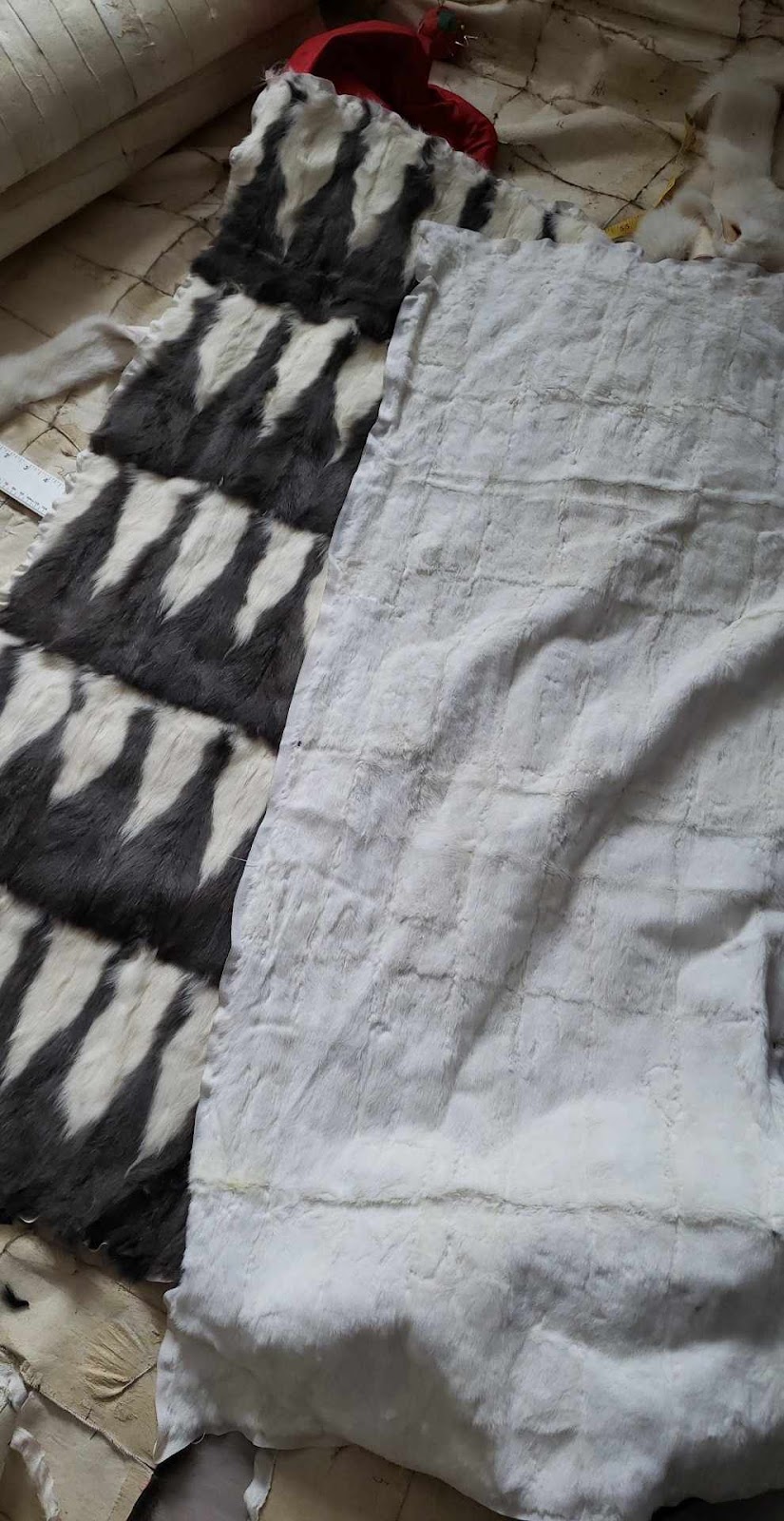
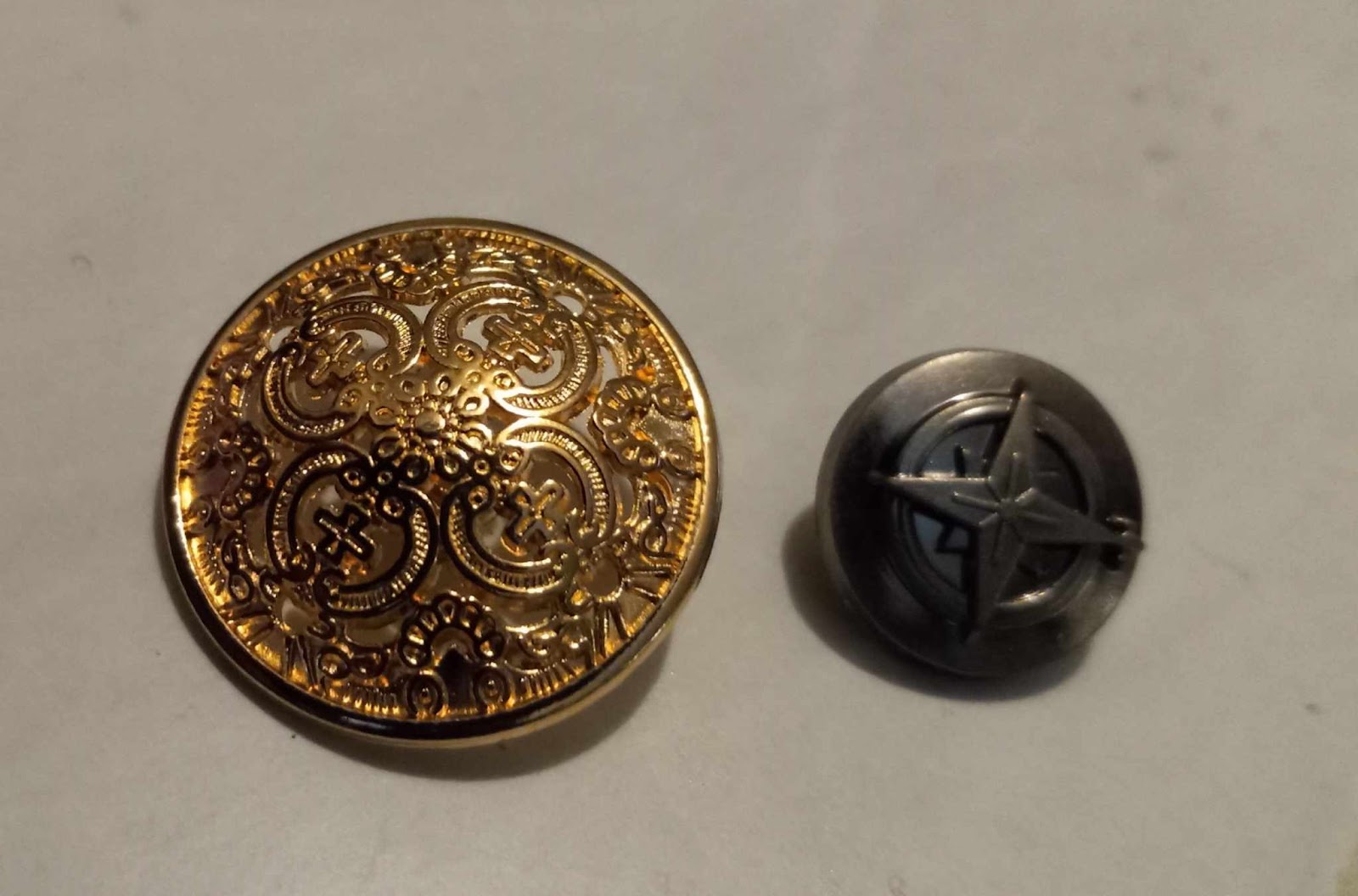


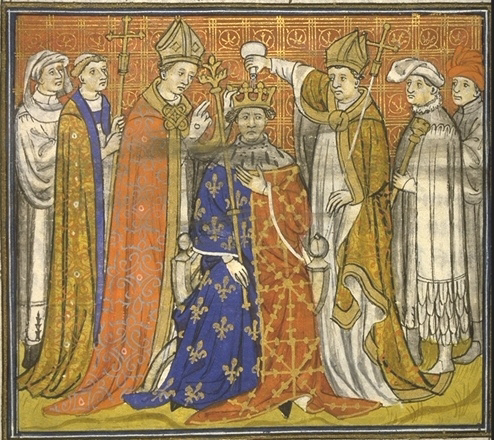

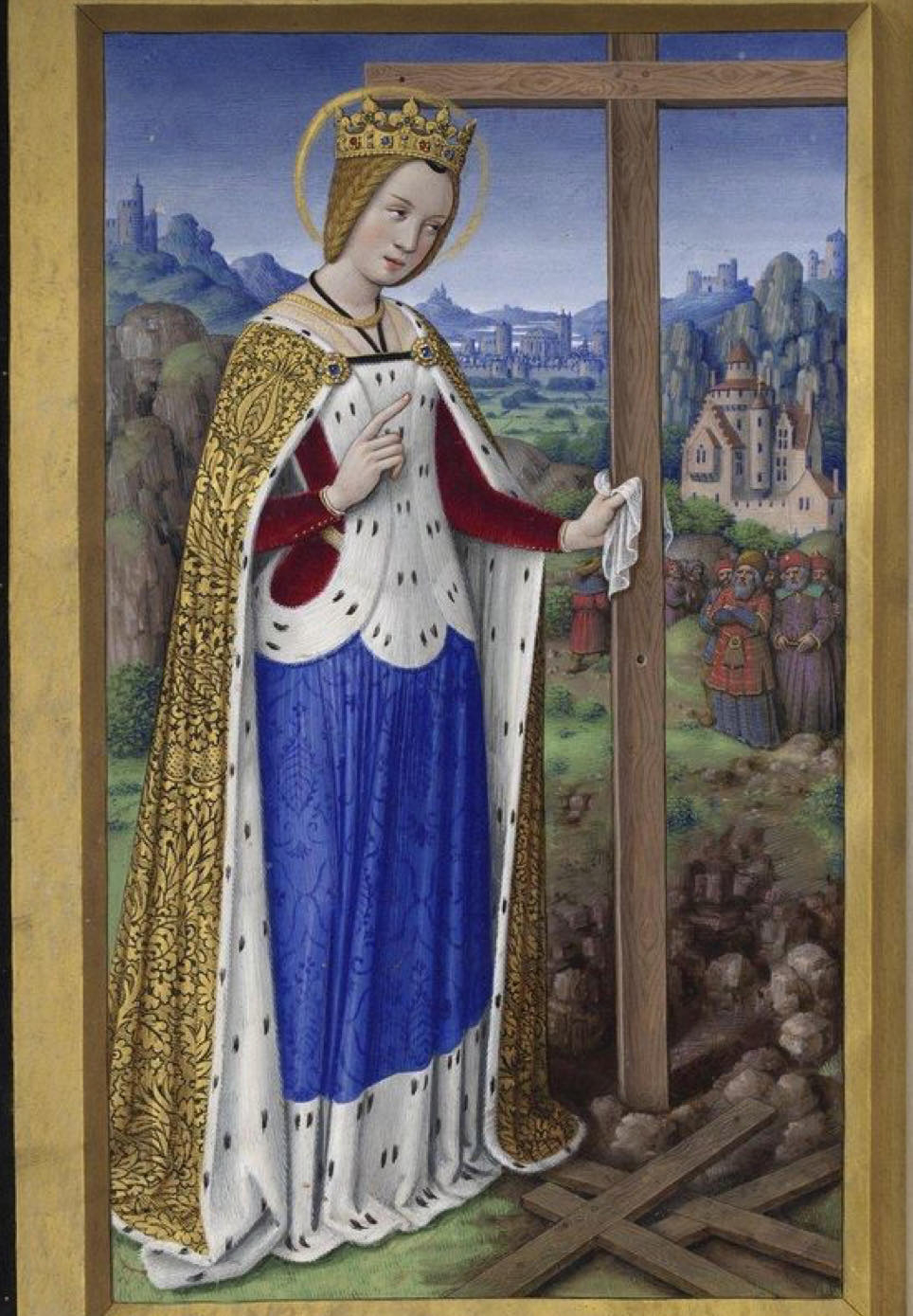
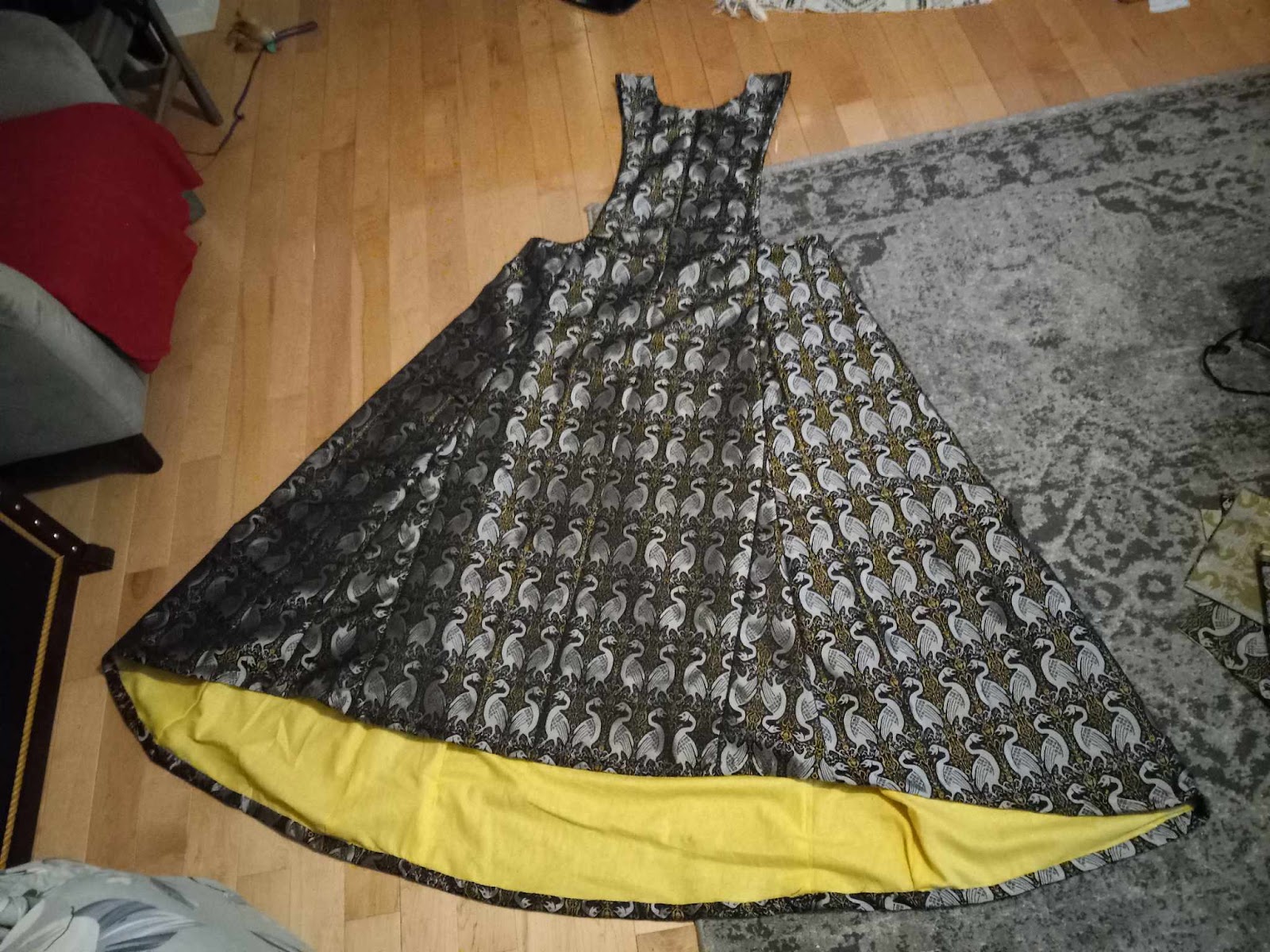









No comments:
Post a Comment